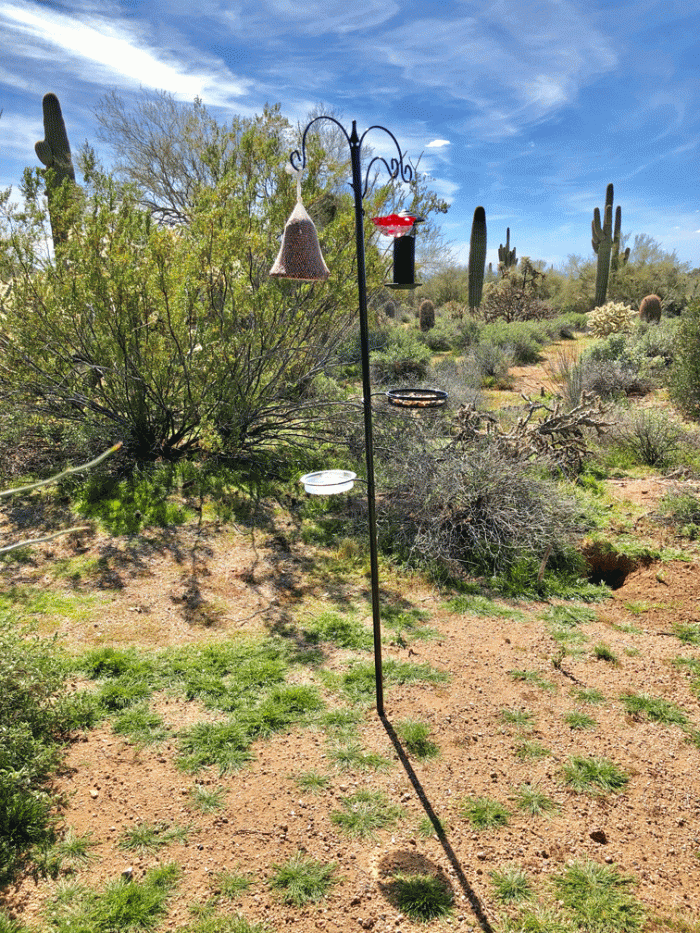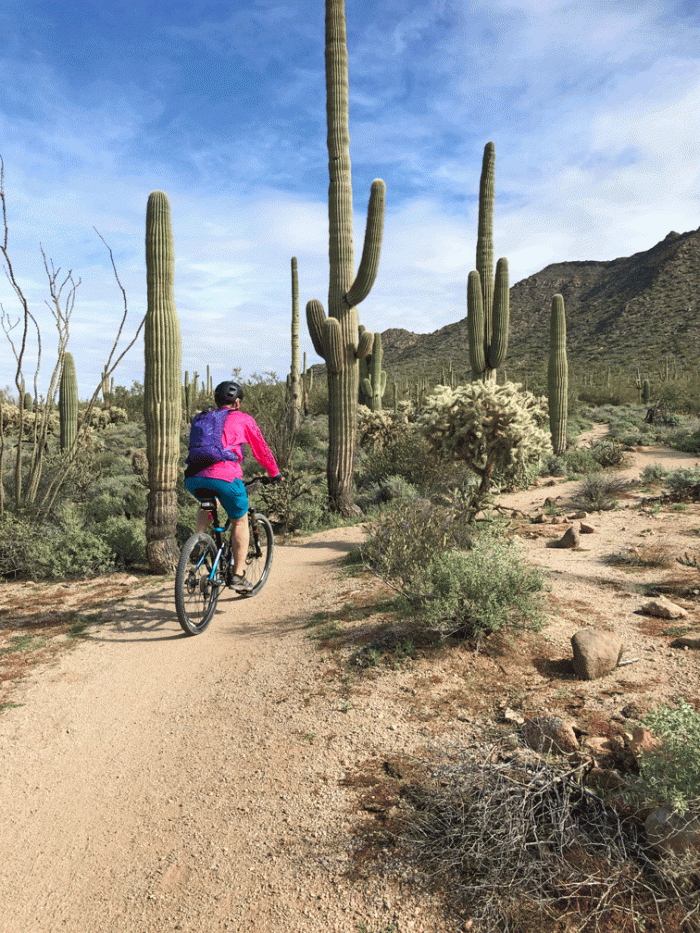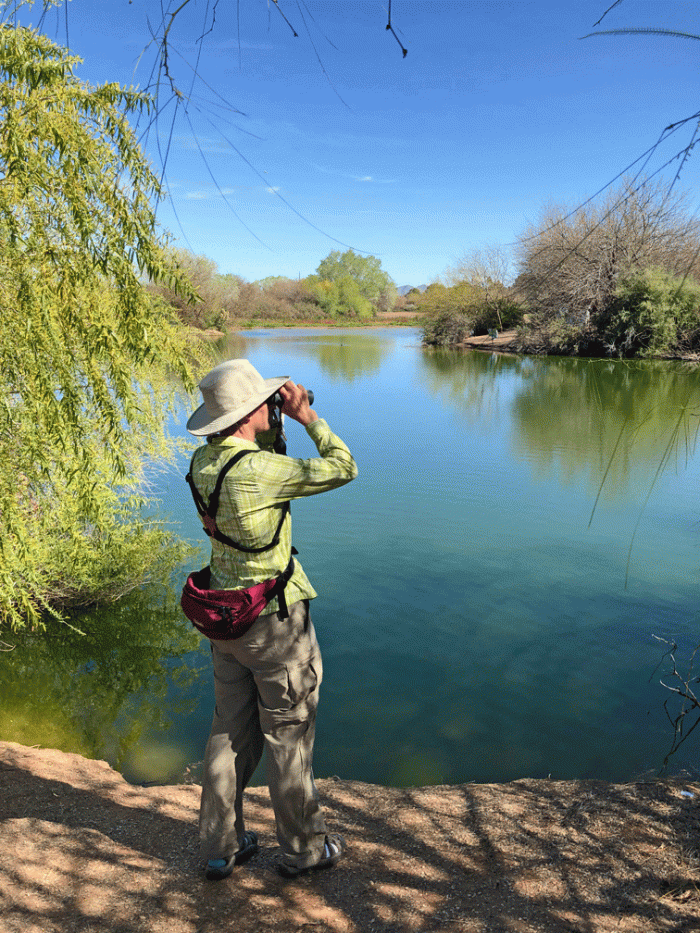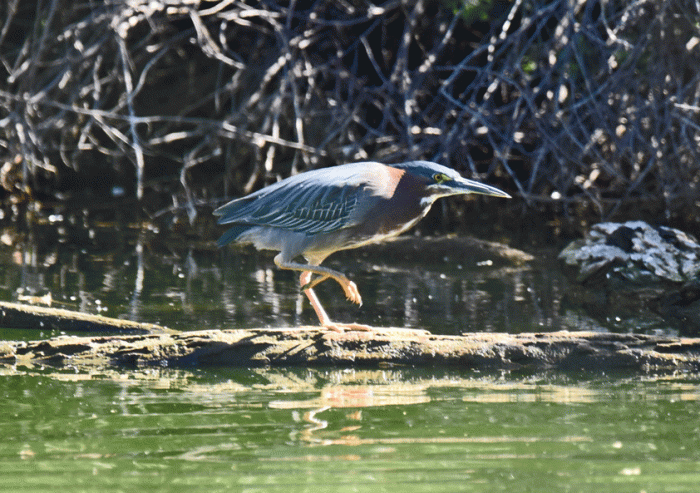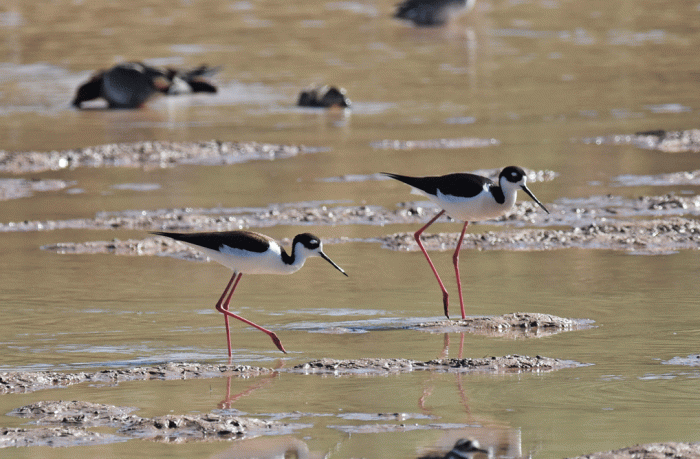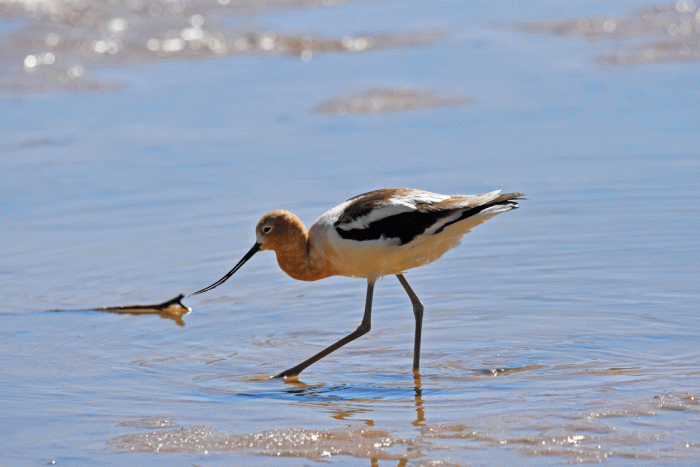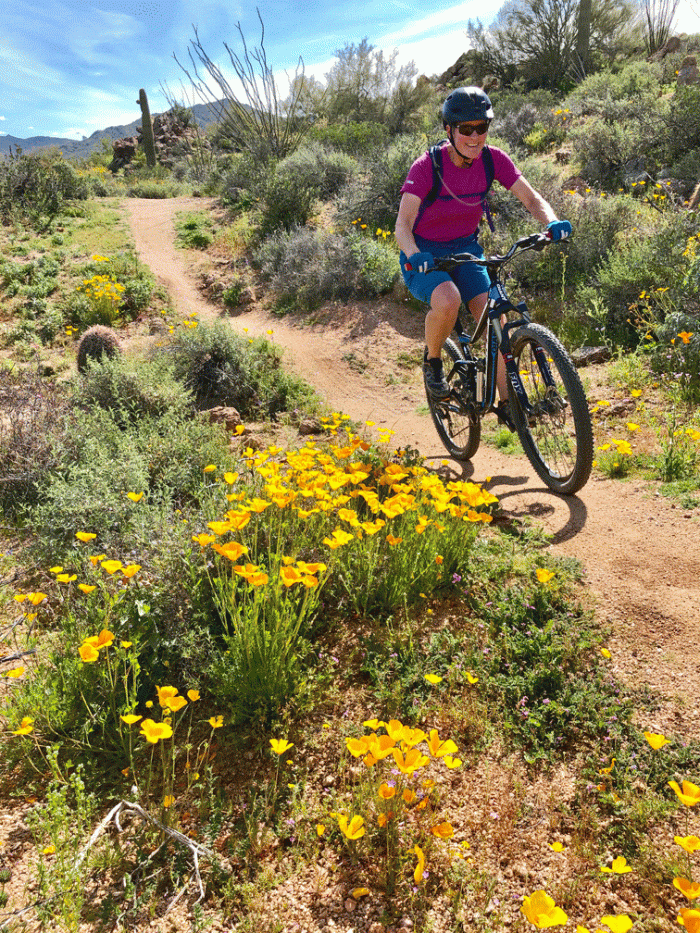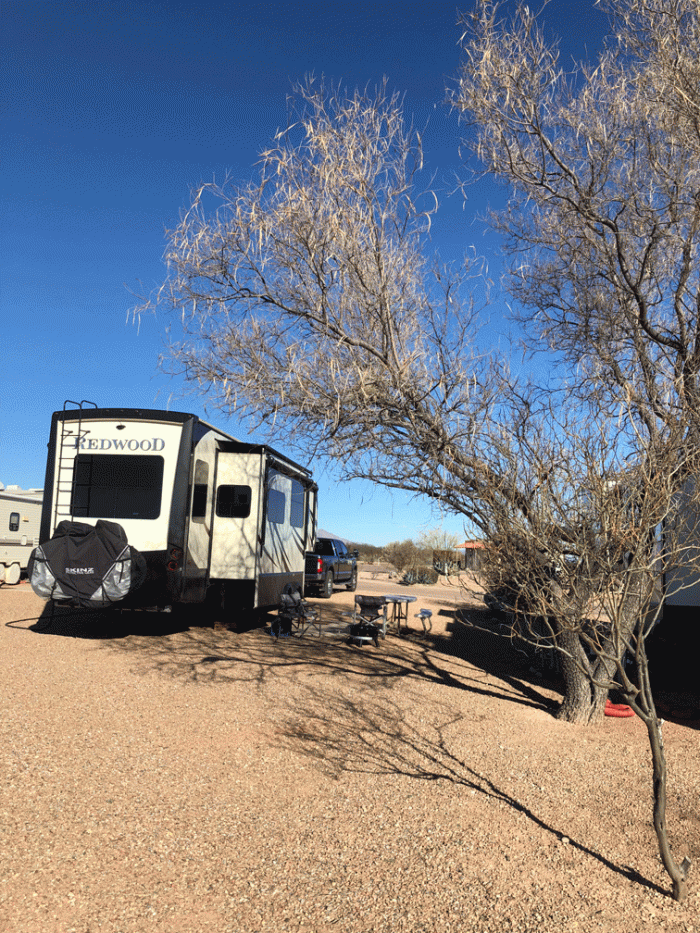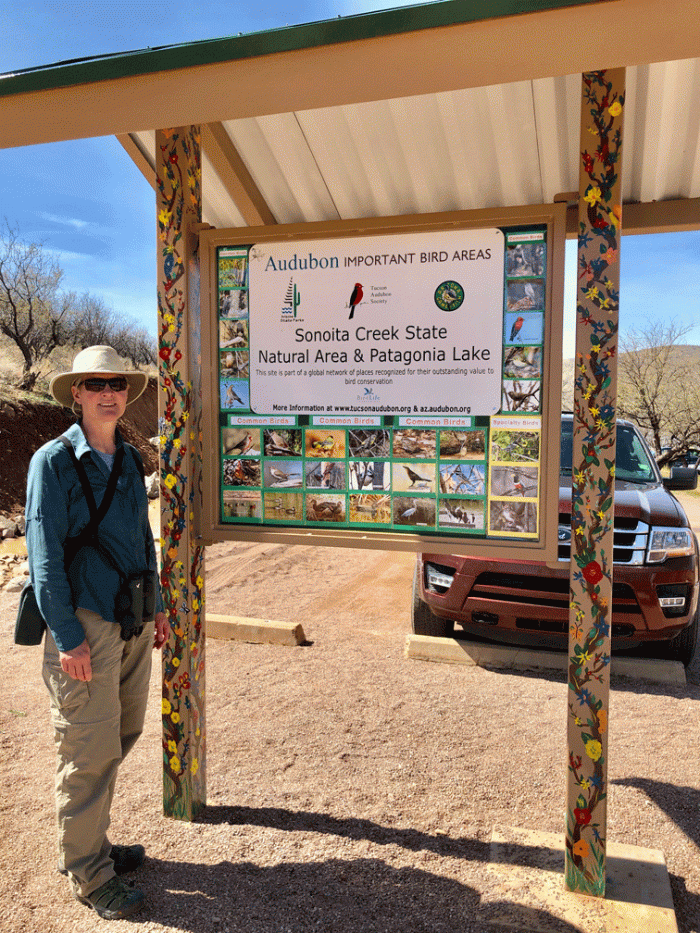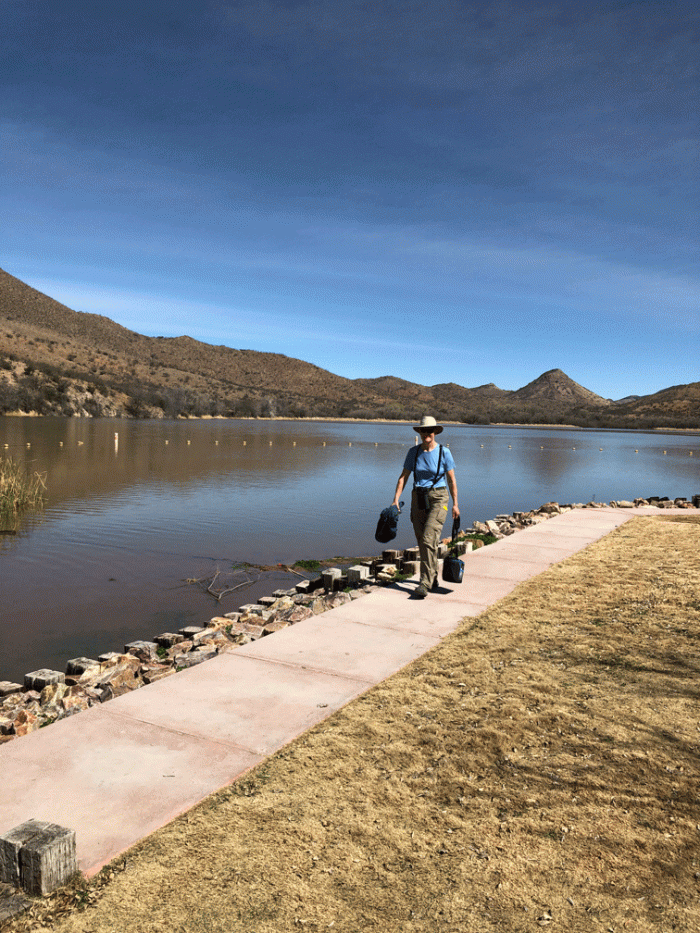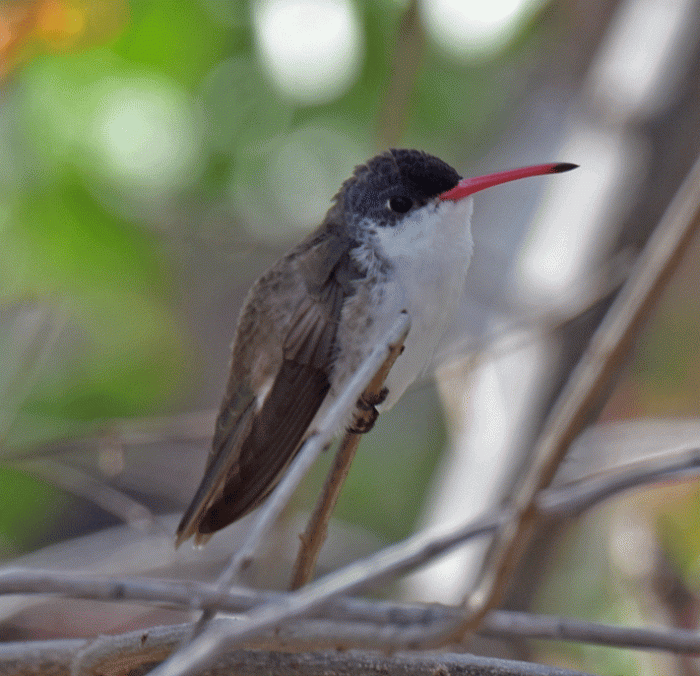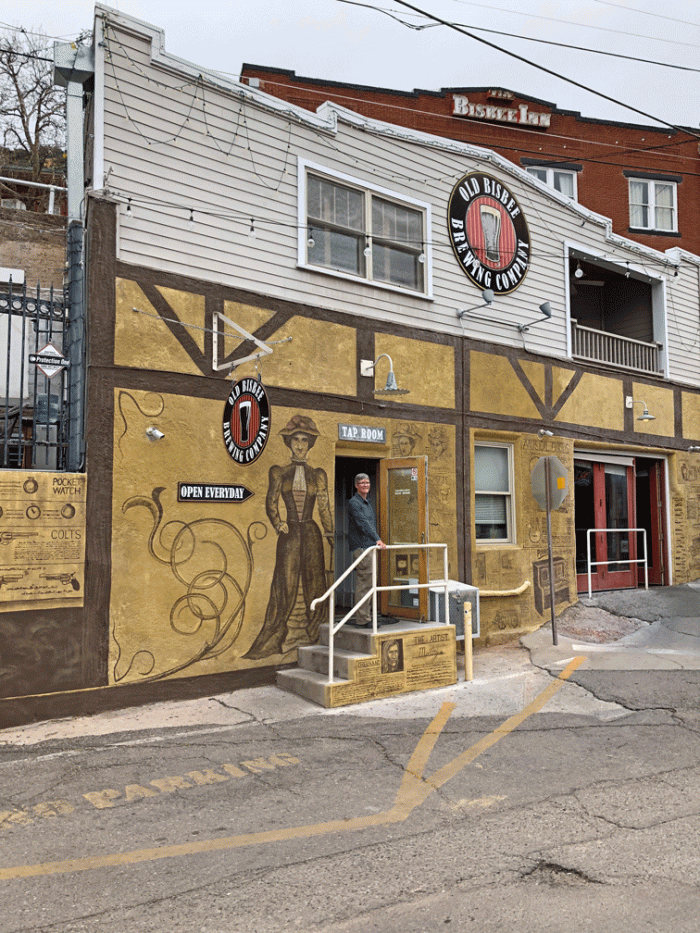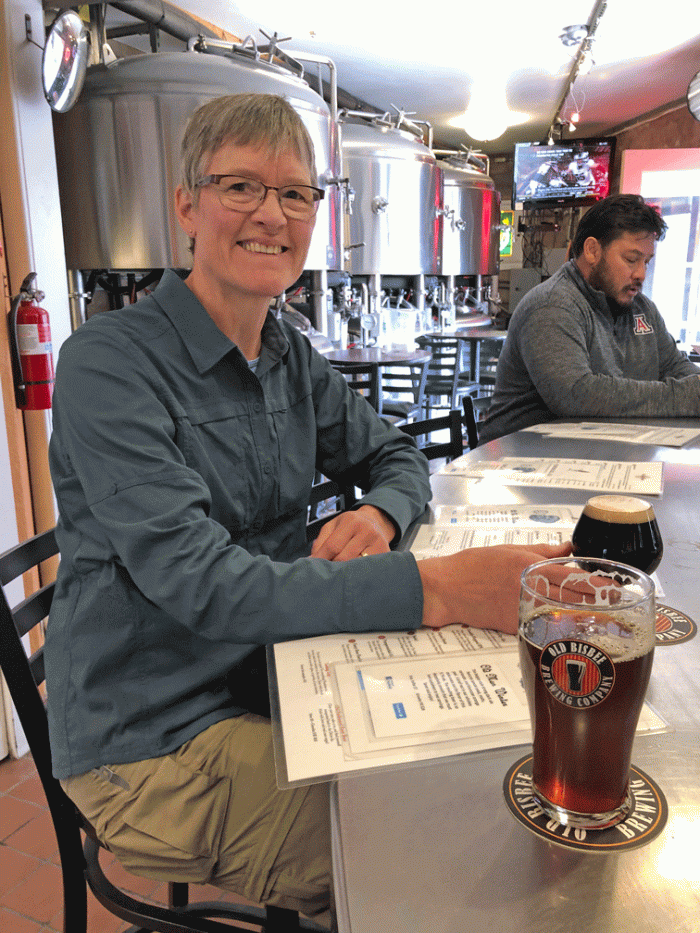We had another ten days in Usery Mountain Regional Park since the last blog post. Here are some of the highlights from that stay.
We hiked the Pass Mountain trail that starts in the park and loops around the mountain. We did the trail clockwise, starting at the Wind Cave trailhead. At a viewpoint about an hour into the hike, we met some nice people from the Chicago area, and one of them took our photo. This view is of the mountain ranges northeast of Phoenix.

We continued around the mountain. You can just make out the built-up area around Fountain Hills in the background behind Wendy’s head in the photo below. The poppies were in full bloom here as well.
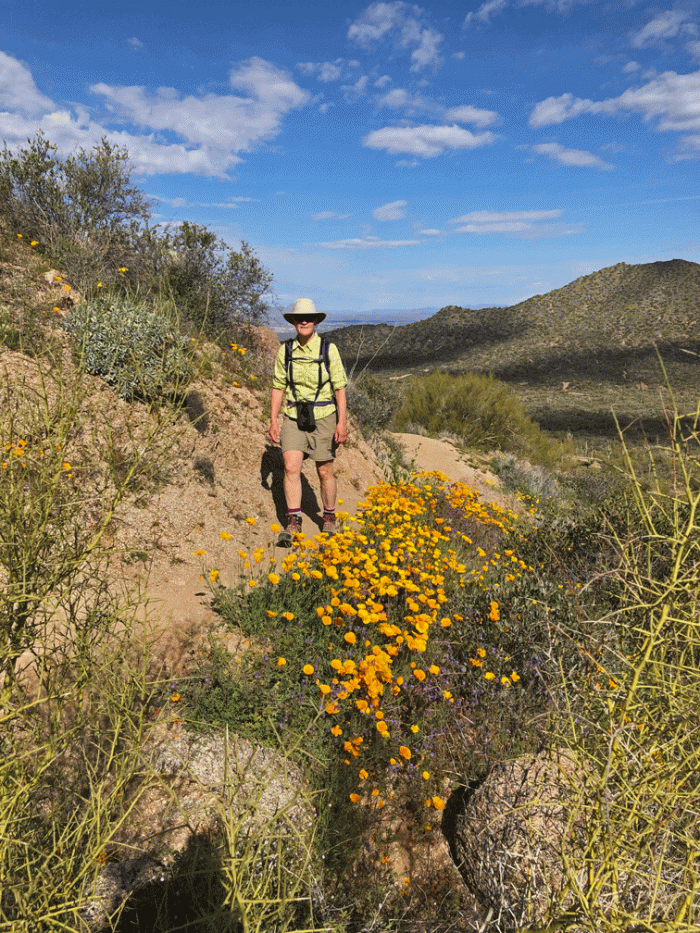
As we made our way to the pass, the Teddy bear cholla caught our attention.
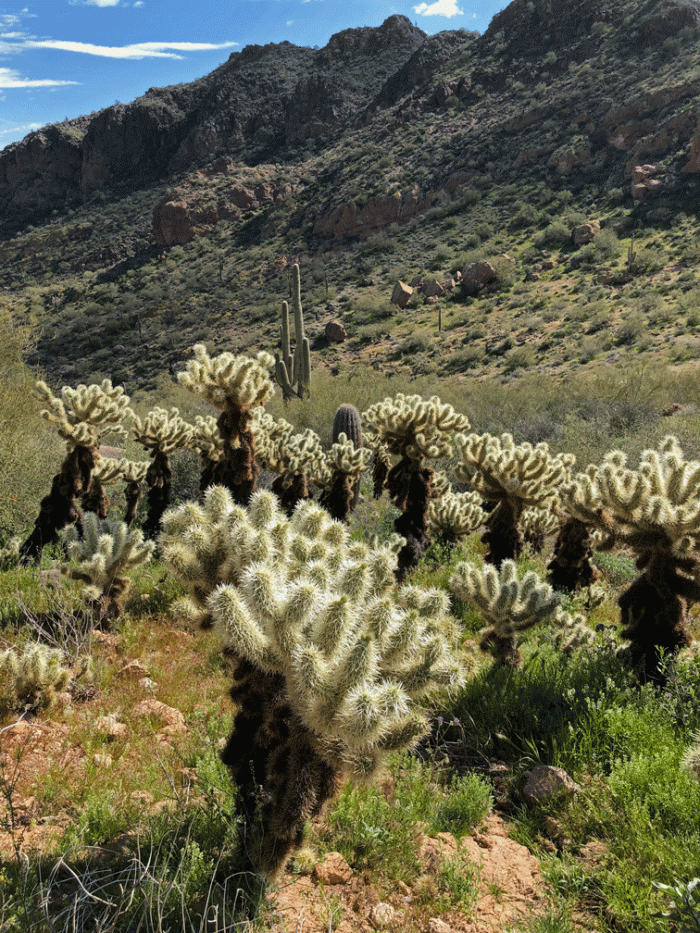
This is the view looking back at the pass. The trail on the southern side was steeper amid loose rocks and some slabs. The 7.5 mile hike took us about four and a half hours.

One day we drove over to the closest other regional park: McDowell Mountain Park. We had heard that there was good mountain biking there, so another day we loaded up our bikes and checked it out. The Pemberton loop trail looked interesting, but we weren’t sure we wanted to tackle the whole 24.5 kilometres. After riding only a few minutes, we changed our mind. Most of the trail was quite smooth and the hills were not too steep, so we kept going. We did the loop clockwise which meant that the last ten km were fun: mostly downhill, on a well maintained trail with banked curves.
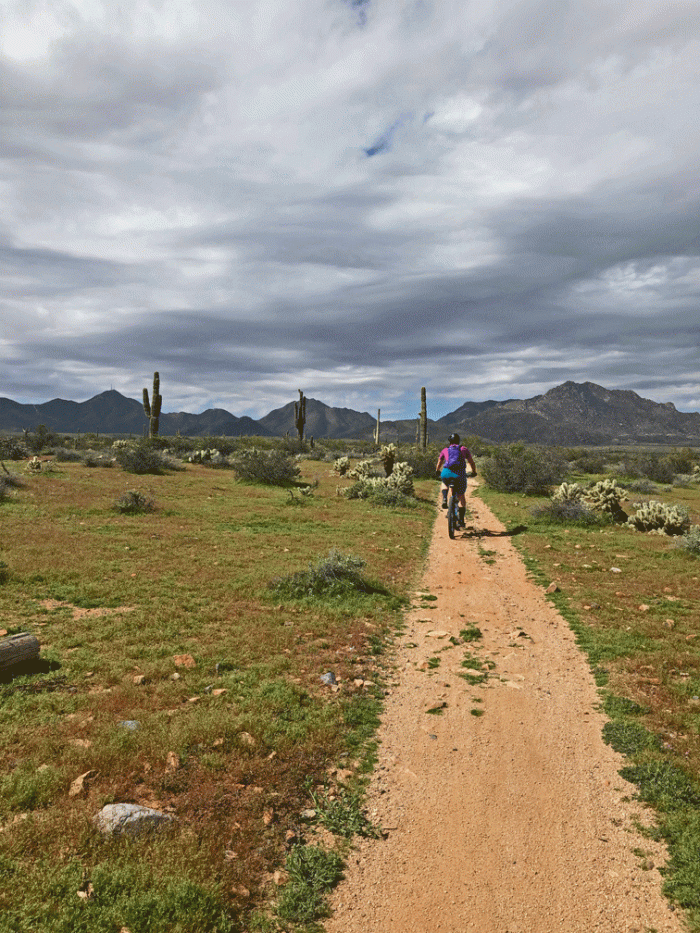
Here’s one of the rest stops along the trail with its funky decorations.
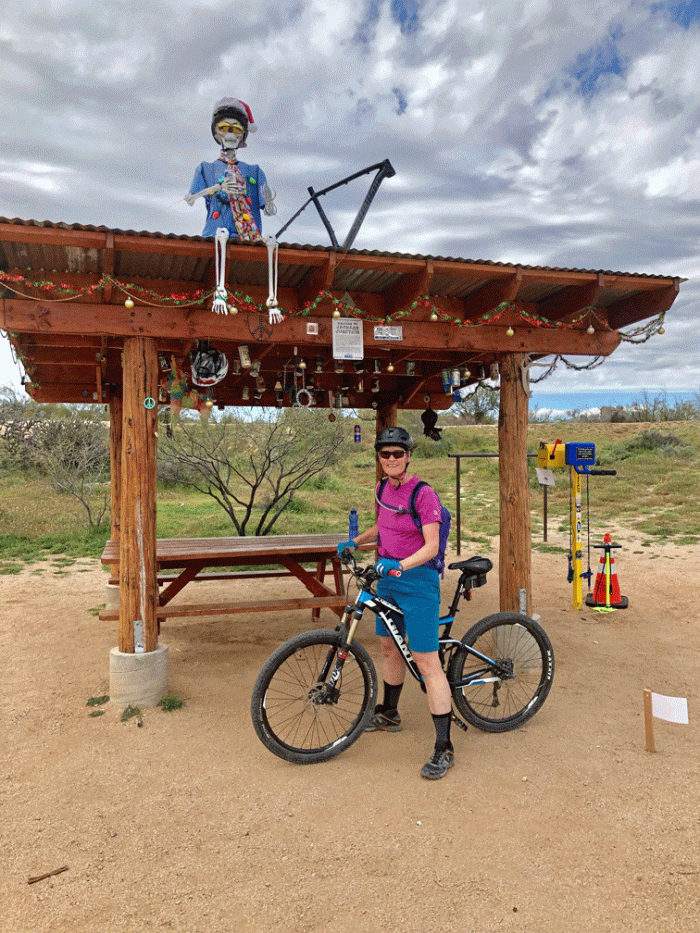
The Salt River was fairly close to Usery Mountain Park, so it was natural for us to go birding there. We stopped at the Granite Reef Rec. Site. The water was really high and there were lots of birds; mainly Ring-necked ducks. The ‘scope was necessary to do any identification, especially for the birds on the far shore. The mountain in the background is the aptly named, “Red Mountain.”

There were also some birds in the trees and bushes along the shore. Doug got a nice photo of a male Northern cardinal.

We returned to the trails that we had ridden the week before that we could access directly from our campsite. This time we met some locals who explained some of the new trails. Here’s a photo of Doug on the new trail called, “Stinger.”
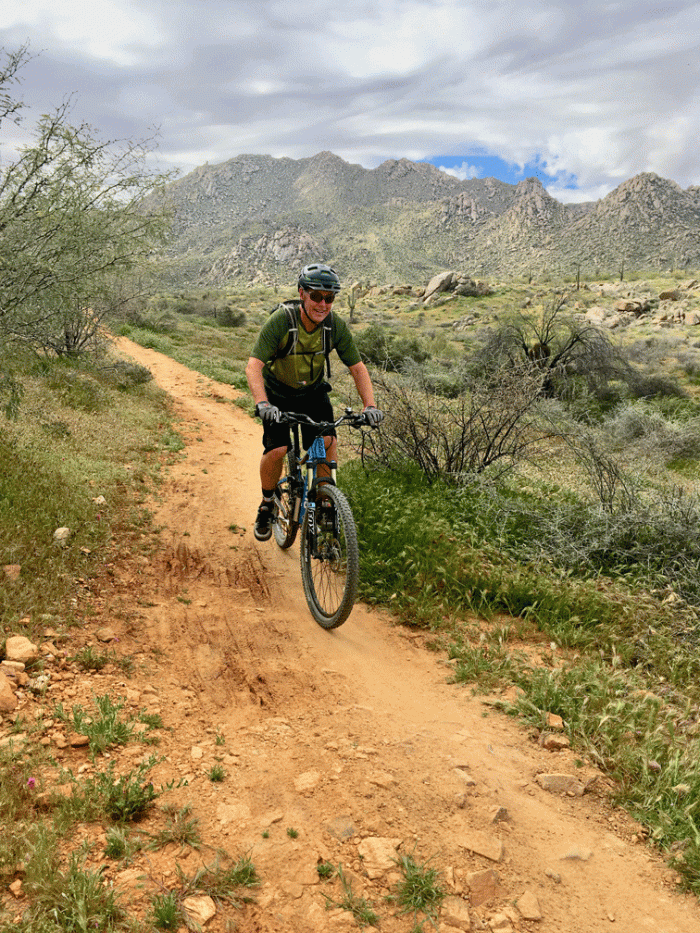
Here’s Wendy on another portion of “Stinger.” You can see Red Mountain in the background.

You might believe that the weather was amazing while we were here, because that’s all the photos show. But it did rain for most of two days, and not just sprinkling. Wendy took the opportunity to get out her quilt project. Below you can see how she is enjoying the space for her sewing, pressing, cutting and organizing stations.

The clouds cleared late on the afternoon of our last day at Usery Mountain. We got out on the trails right in the park. The ocotillo, which usually look like dead sticks were sporting their new leaves. Apparently their leaves will come out just after a rainfall.

Most of the compass barrel cacti were solitary, so this clump of them was unusual.
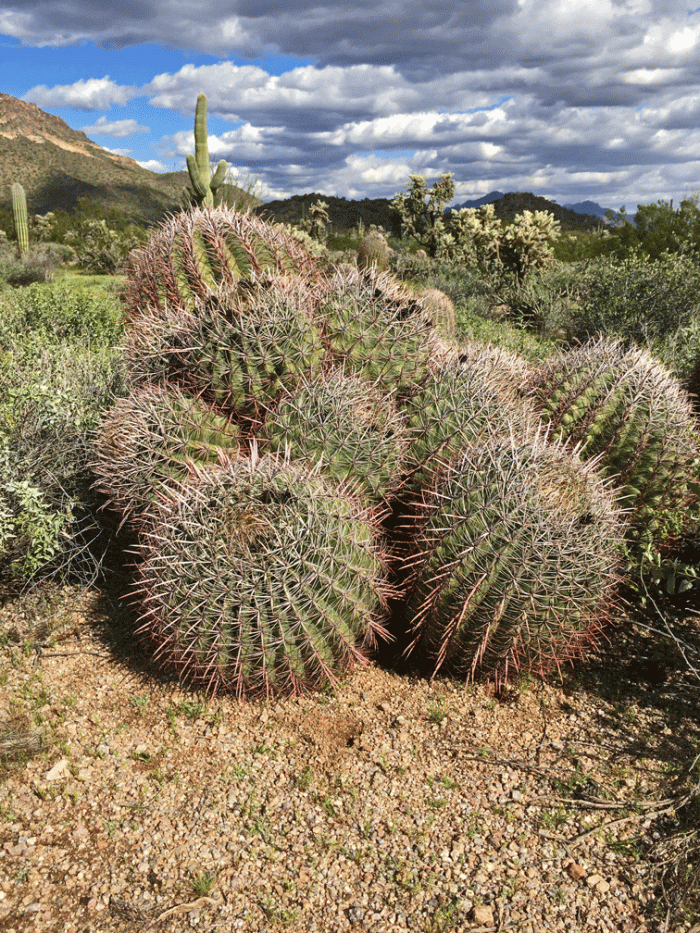
If you look carefully between the two larger Saguaros, you can see the white lettering on the mountain that says, “Phoenix” with an arrow pointing west. A boy scout troop built the sign in the 1950s. Doug took this photo very strategically; in another few steps from this spot you would be able to see the RVs in the campsite.
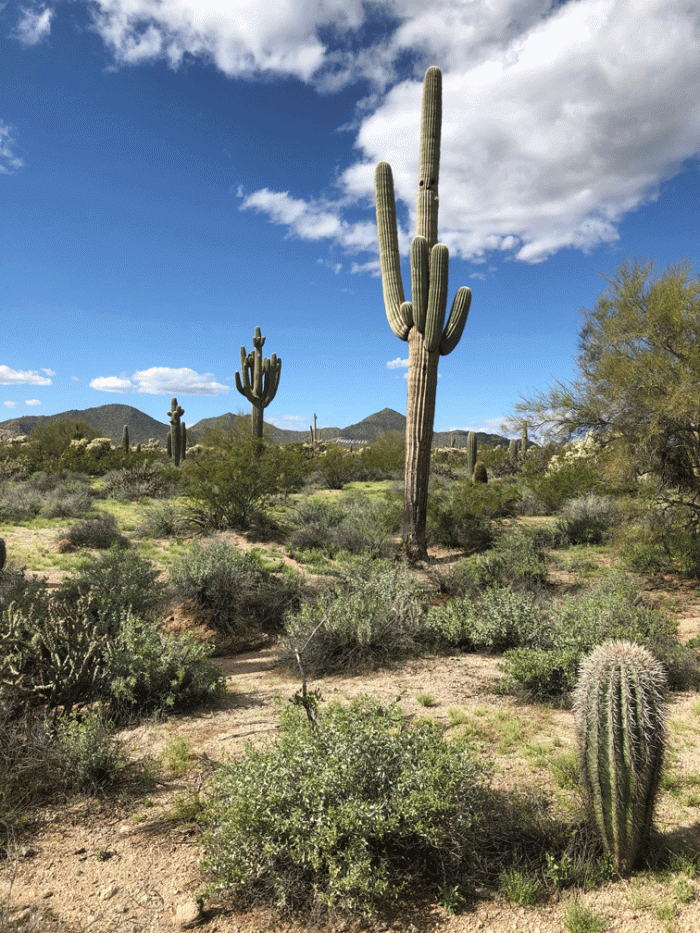
We totally enjoyed our stay at Usery Mountain Regional Park. The location was close enough to the city for groceries (including Costco), and we were also in a natural setting. Here’s a view of our campsite (#23) looking east.

The sunsets were a bonus. This was the view from our campsite (looking west, obviously.)
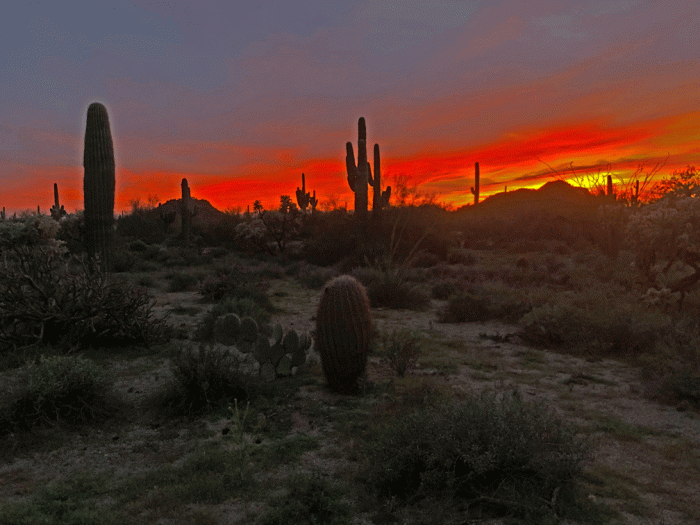
We’ll also miss our feathered friends. We put out quail and dove mix and often had over twenty Mourning doves and a covey of Gambel’s quails under the feeder. This male quail wandered into the grass to allow for a nicer looking background.

This Gila woodpecker adapted well to all of the feeders, even the ones that were not intended for him. Here he is drinking from the hummingbird feeder. (You can see his tongue!) We moved the feeder into a bush that wouldn’t support him and the hummer was much happier!

There was always something to watch. Below you can see a Curve-billed thrasher go in for a peanut, while a Gila woodpecker hangs on from below and a Mourning dove returns to its favourite perch right in the dish.
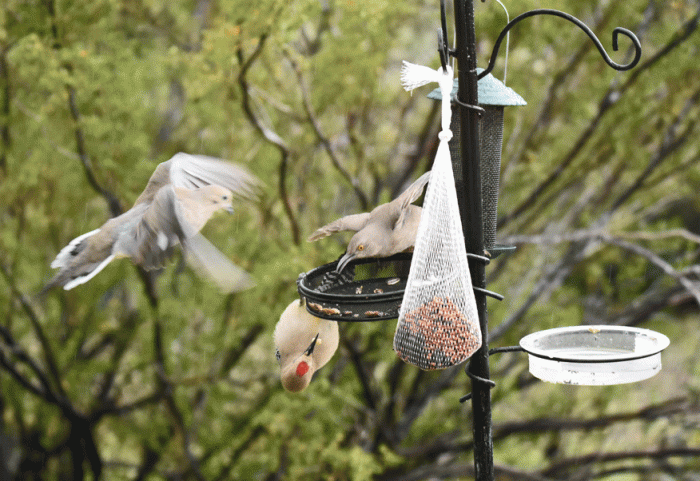
Our two weeks in the Mesa area went quickly. We hope to return next year. Next blog post will document our time in the Sedona area.



